
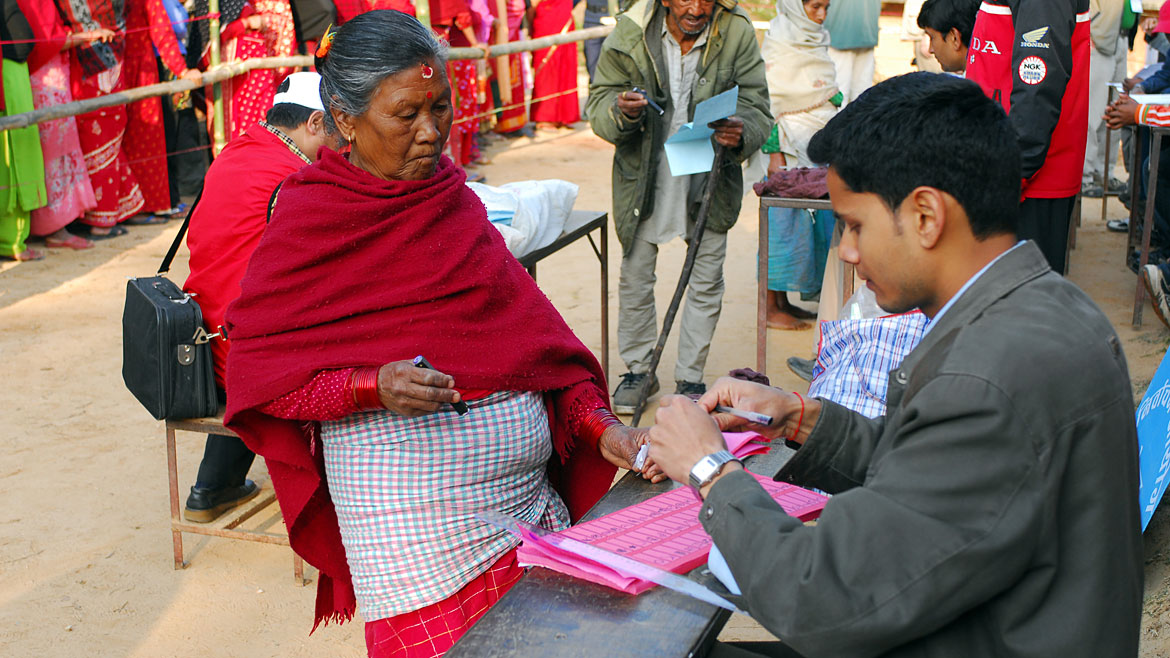
The Carter Center’s international election observation delegation to Nepal’s April 10, 2008, elections, led by former U.S. President Jimmy Carter, former First Lady Rosalynn Carter, and Dr. Surakiart Sathirathai, former deputy prime minister of Thailand, included 62 observers from more than 20 nations. The only international observation organization present throughout Nepal’s entire electoral process, the Center deployed observers throughout the country's 75 districts multiple times during the pre–election period. All Photos: The Carter Center/D. Hakes| Carter Center Slideshow (2008)
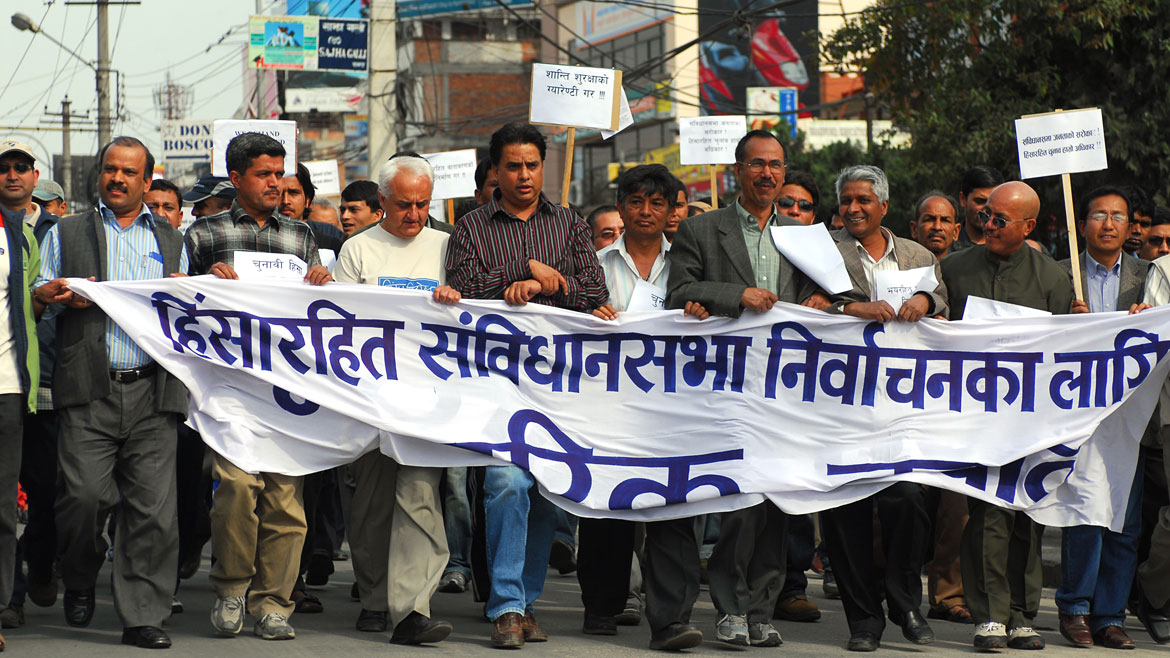
Hundreds of Nepalis took to the street days before the election to protest election-related violence. Nepal’s constituent assembly elections were twice delayed due to political disagreements among the interim government’s parties. Violence spiked in the weeks prior to elections, mostly in the southern Terai region of Nepal. All Photos: The Carter Center/D. Hakes
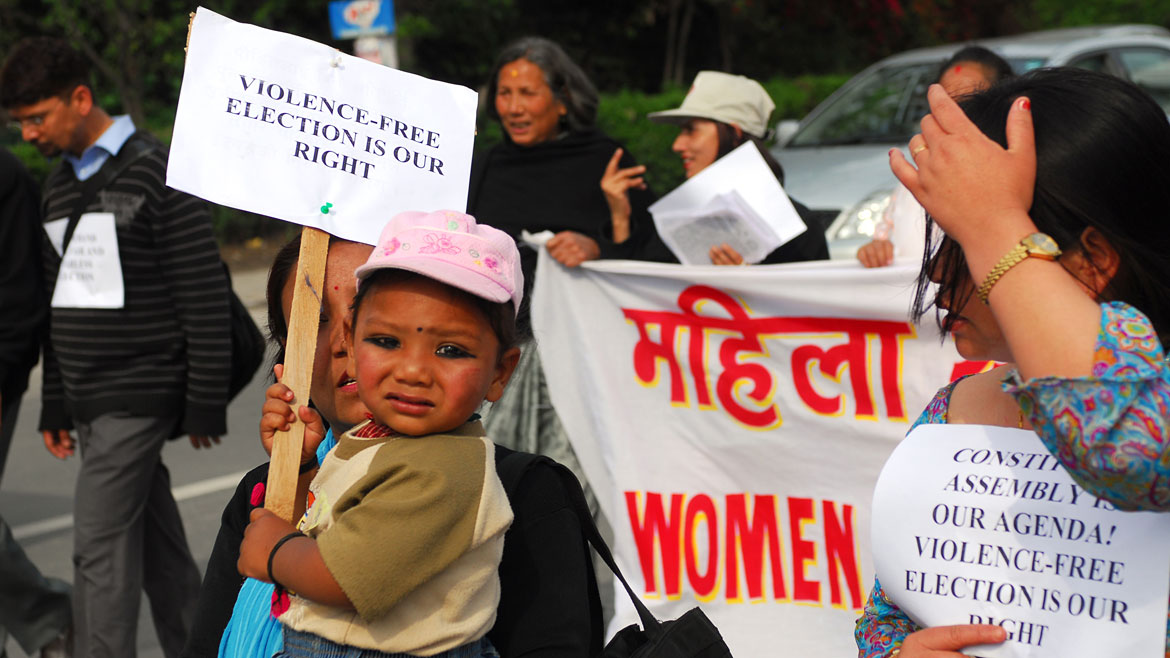
The rally was comprised of members of Kathmandu–based civil society organizations, young and old, to raise their voice against intimidation by political parties and violence leading up to and on election day. All Photos: The Carter Center/D. Hakes

Voter education was held to educate people on how to use automated voting machines, which were used in one Kathmandu constituency on election day. All Photos: The Carter Center/D. Hakes
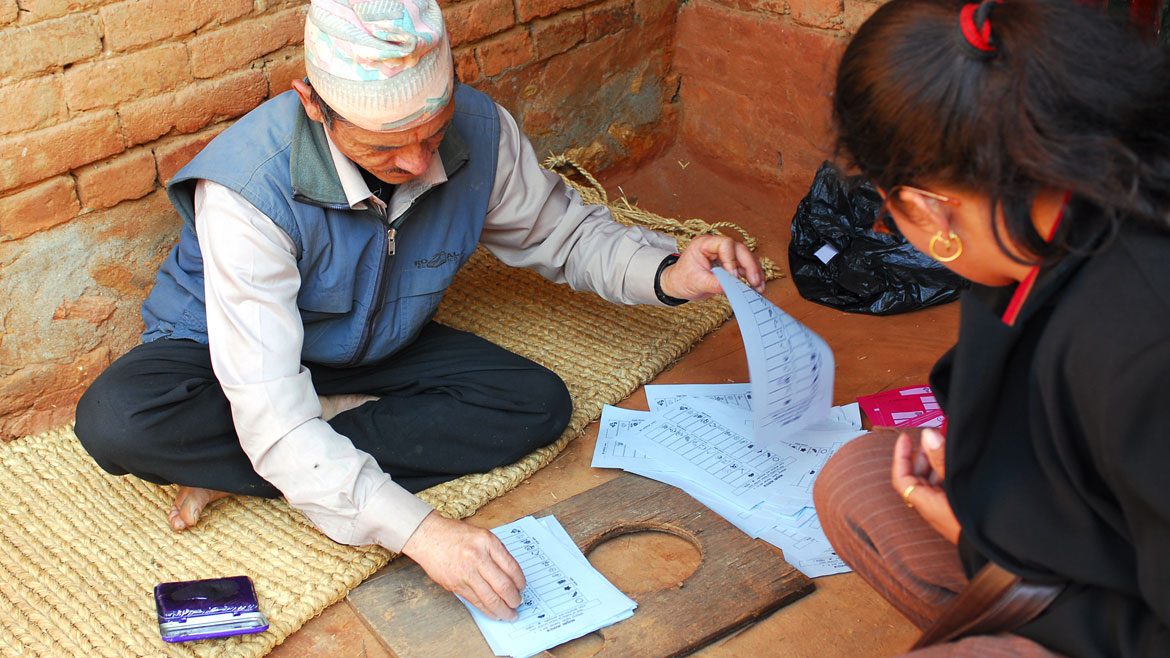
In this rural area, a polling station official marks mock ballots to show voters the correct way to do so on election day. All Photos: The Carter Center/D. Hakes
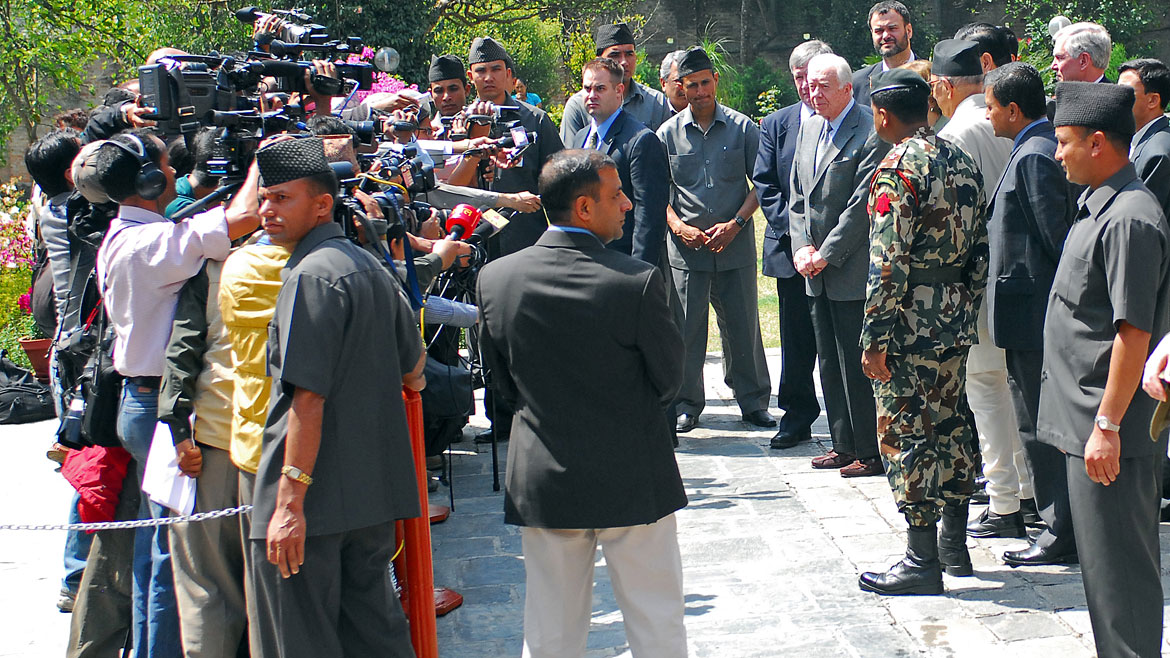
President Carter spoke to local and international media about the upcoming elections to instill confidence in the process and to share what he learned in his meetings with political parties, civil society leaders, and the election commission. All Photos: The Carter Center/D. Hakes

In the days before the election, the election commission organized ballot boxes and other polling station materials like voter lists, ink to mark the thumbs of voters, and ballots to be delivered across the region. All Photos:The Carter Center/D. Hakes
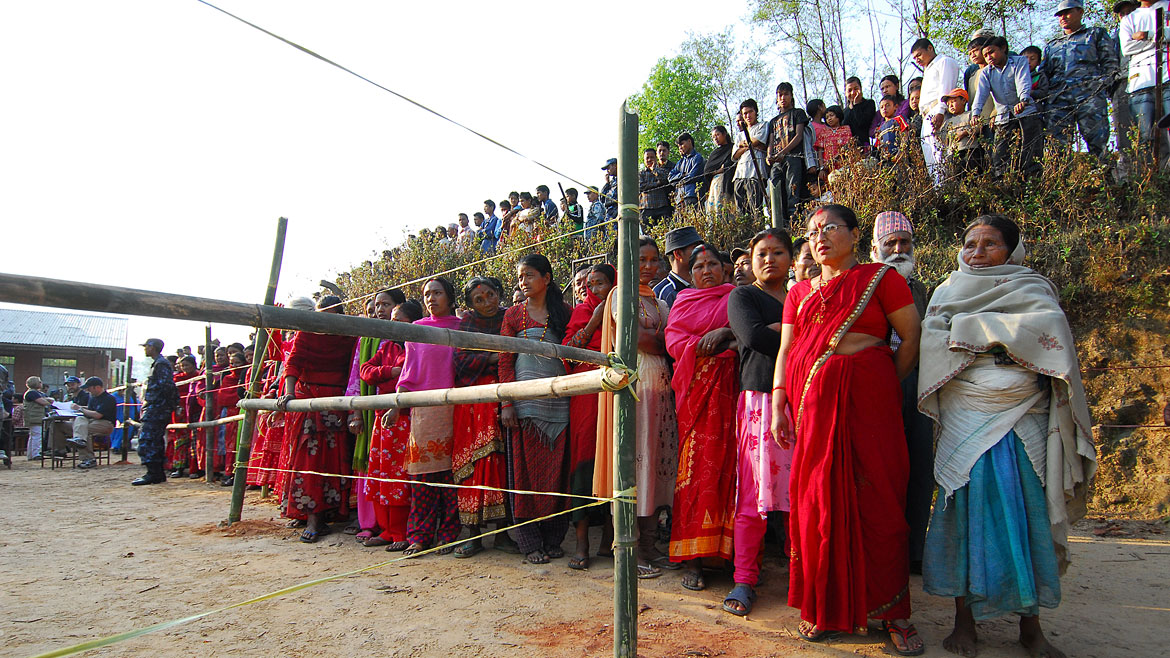
Voters in Bhaktapur, Nepal, wait for polls to open for Nepal’s constituent assembly elections. Voting began at 7 a.m. across the country. In keeping with cultural traditions, there were separate lines for women and men to vote. All Photos: The Carter Center/D. Hakes
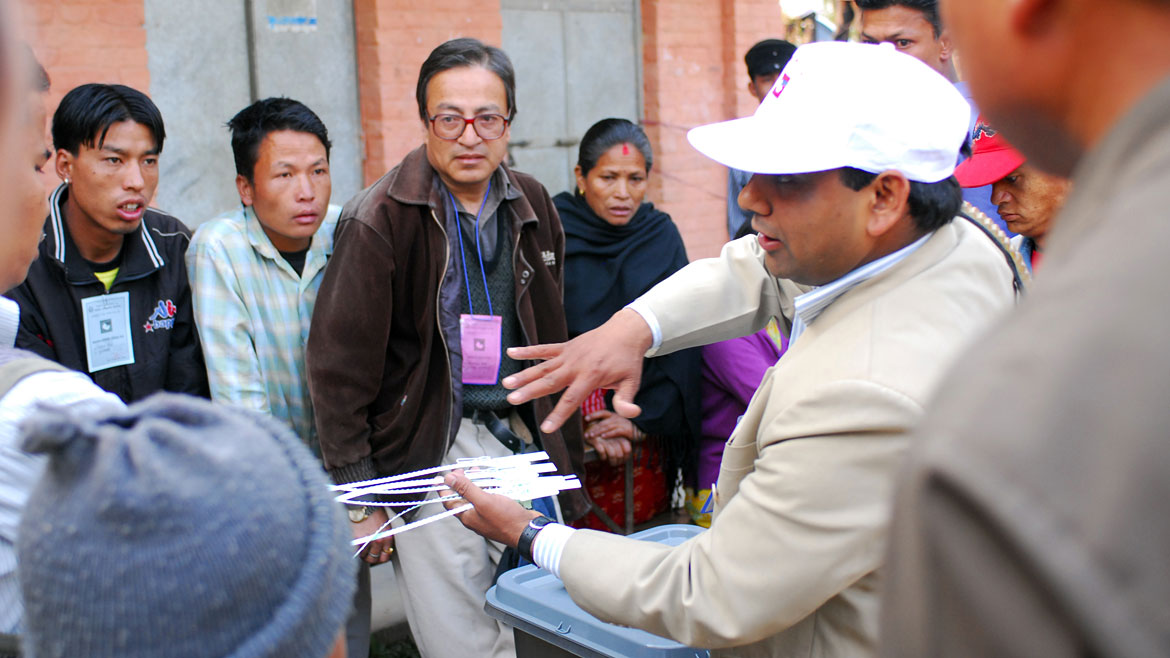
While voters waited for polling to begin, domestic and international observers watched as polling officials conducted opening procedures, like sealing the empty ballot boxes. All Photos: The Carter Center/D. Hakes
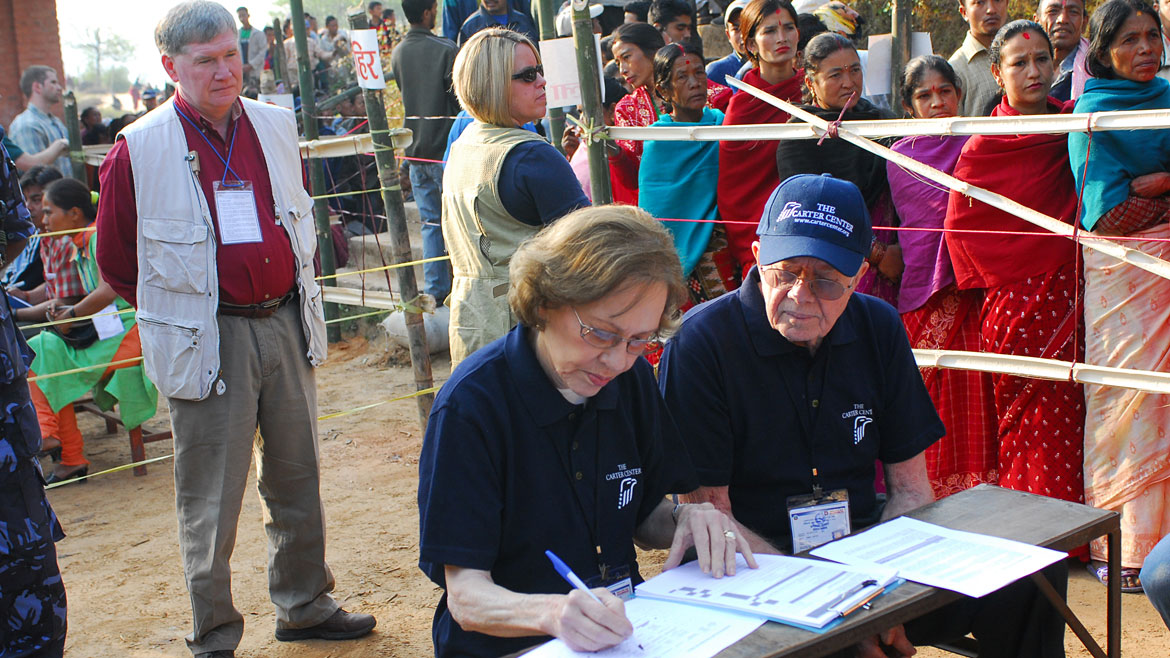
President and Mrs. Carter complete a polling center opening form while waiting for voting to begin in Bhaktapur, Nepal. All Photos: The Carter Center/D. Hakes

Many polling stations had long lines as polls opened on April 10 in Nepal. Here an early voter casts his vote in Bhaktapur. All Photos: The Carter Center/D. Hakes

Carter Center observers compare notes at a polling station in Bhaktapur, Nepal. All Photos: The Carter Center/D. Hakes
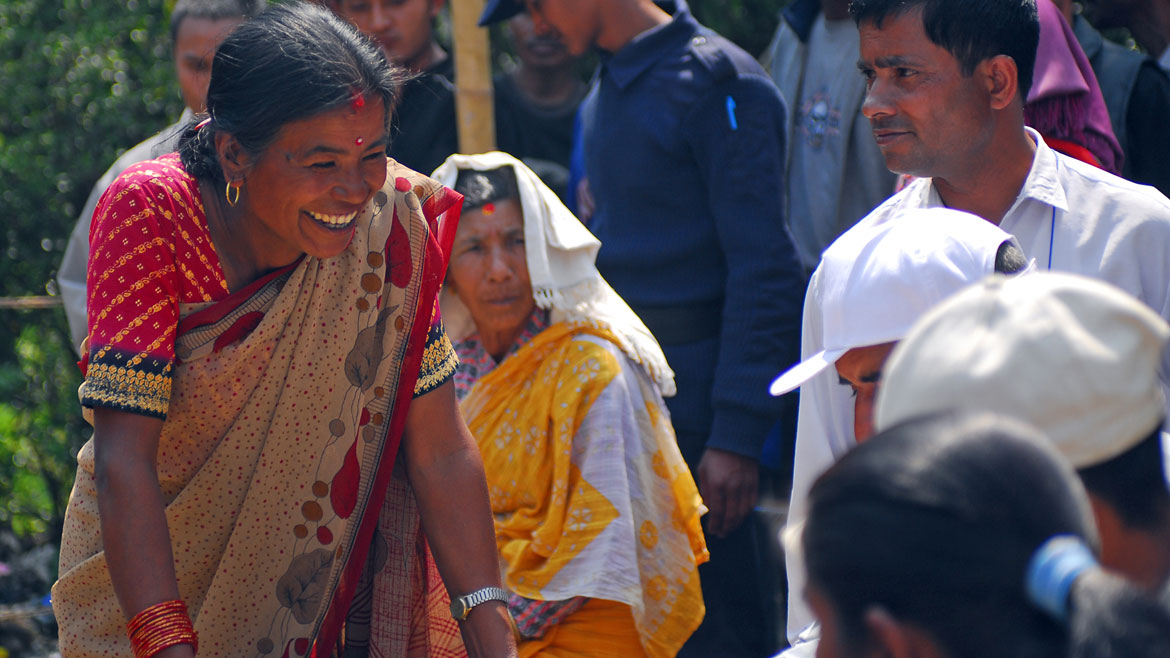
A voter in Kathmandu, Nepal. Carter Center observers visited more than 400 polling centers in 28 districts on election day and found that voting was largely peaceful. All Photos: The Carter Center/D. Hakes
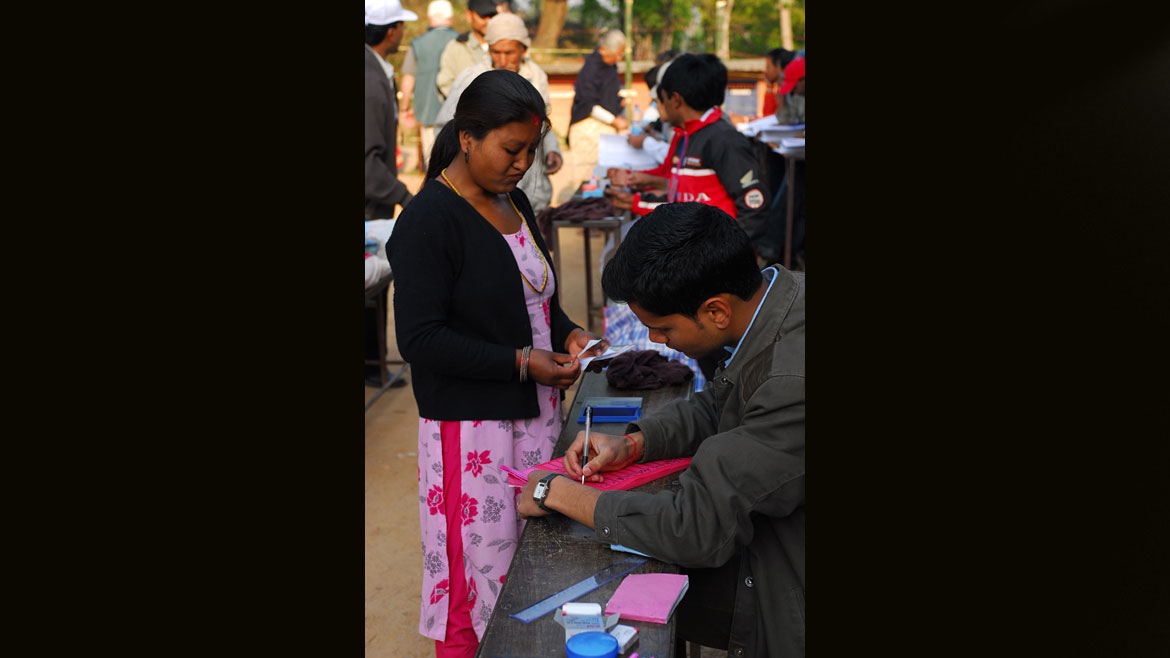
A voter presents her ID card to a polling station official in Bhaktapur, Nepal. In some locations, Carter Center observers noted an absence of a required consistent check for voter identification. All Photos: The Carter Center/D. Hakes
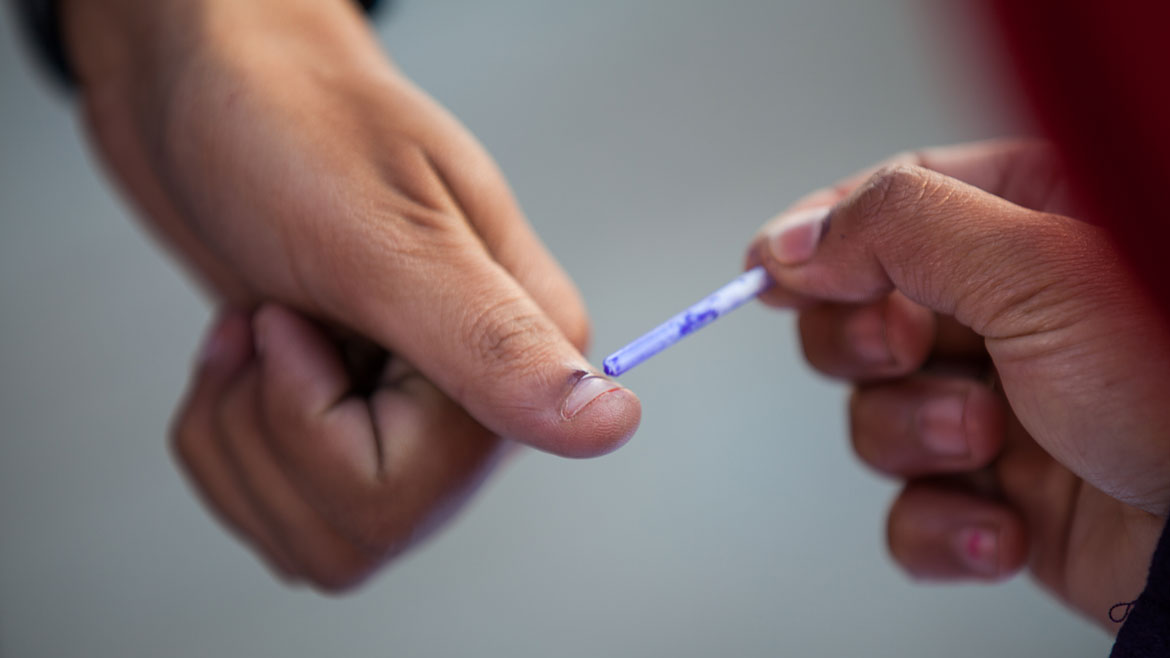
Each voter's thumbnail was painted with indelible ink to inhibit multiple voting. All Photos: The Carter Center/D. Hakes
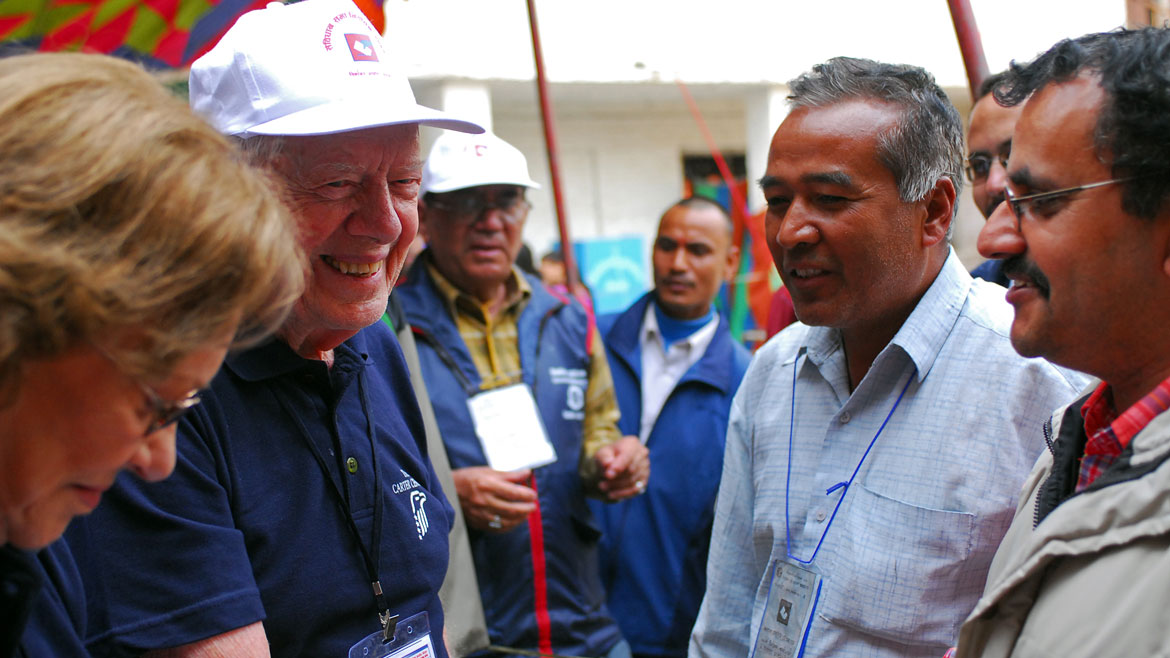
President and Mrs. Carter are greeted by voters as they arrive at a polling station in Kathmandu, Nepal. It was common at each station for them to be greeted with crowds clapping and people eager to shake their hands. All Photos: The Carter Center/D. Hakes

President Carter and domestic observers watch poll closing procedures in Kathmandu, Nepal. Voting ended at 5 p.m. All Photos: The Carter Center/D. Hakes
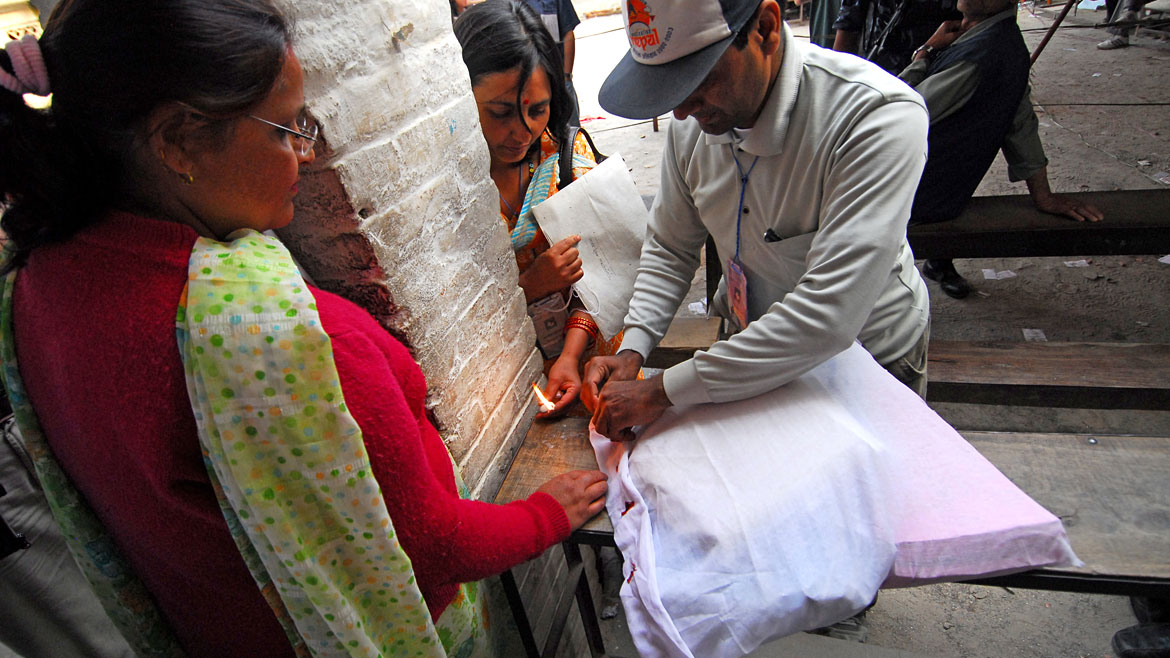
Polling station officials seal unused ballots in bags to be delivered to constituency counting centers. All Photos: The Carter Center/D. Hakes

The Carters, and other Carter Center observers, watch the ballot counting process at a counting center in Kathmandu. The Carter Center will remain in Nepal to observe activities post–election and to produce a final report of overall findings. All Photos: The Carter Center/D. Hakes
